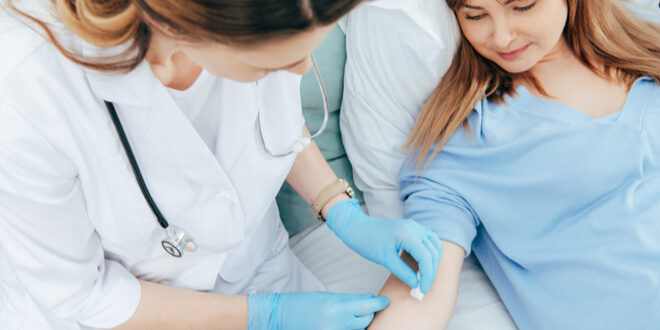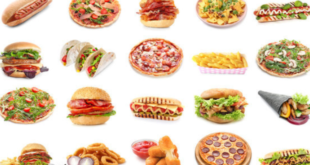Little by little, the battle against COVID-19 appears to be turning.
Things have improved considerably since the end of 2020, and that’s good news for everyone, especially businesses.
Exactly one year after the deadly pandemic began, schools are starting to reopen, outdoor concerts and sporting events are expected to resume this summer, government offices are reopening and restaurants are again seating customers indoors.
Disneyland, a major driver of Southern California’s economy, plans to open April 30.
None of this means daily life has returned to where it was before the pandemic hit, but things are at least moving in the right direction.
Schools are bringing back students, but on a limited basis. UC Riverside and other Inland colleges and universities plan to return to classroom instruction this fall, although for now virtual classes remain in place.
Likewise restaurants, which are generally limiting their indoor capacity to 25 percent and groups of no more than six. Outdoor events – including the Magic Kingdom – will also have limited capacity until the Coronavirus is more under control.
But since vaccinations began earlier this year, things have improved, both statewide and locally.
California is one of five states – Oregon, Arizona, Colorado and New Mexico are the others – listed as “partially open” by the U.S. Chamber of Commerce. That means stay-at-home orders have been lifted, but residents must wear masks or other face coverings while out in public and six-feet social distancing requirements remain in place.
As of March 24, Riverside County continued to report a downward trend in COVID-19 cases. There were 143 hospital patients being treated for the disease on that date, including 32 in intensive care. That was a drop of about 25 percent from the previous week, according to county health officials.
San Bernardino County’s most recent updates are also encouraging. During the seven-day period that ended March 25, an average of 139 new cases of COVID-19 were reported per day, a 9.9 percent drop compared with two week earlier, according to the county’s Department of Public Health.
COVID-19 hospitalizations are also decreasing: 144 confirmed patients as of March 24, a decrease from two weeks earlier, although the health department did not say exactly how much of a drop that was.
Statewide, as March 25, more than 3.5 million California residents had been diagnosed with COVID-19, including 2,251 cases reported that day, or. five people for every 100,000 residents., according to www.covid19.ca.gov.
There were also 57,091 deaths reported as of that date, or .03 deaths for every 100,000 residents. Both sets of numbers represent a decline from recent numbers, although the website doesn’t say how much.
Also this week, the California Department of Public Health announced that, as of April 1, everyone 50 years old or old will be eligible for vaccination. By April 15, that will be expanded to anyone 16 and older.
“The light at the end of the tunnel continues to get brighter,” Gov. Gavin Newsom said in a tweet this week.
With at least some form of normalcy on the horizon, some businesses are starting to consider how the last 12 months might have changed how they do business, either temporarily or permanently.
“I think the worst part is over, but I wouldn’t say we’re back to normal,” said Brandy Murad, accounts manager with OEM Materials & Supplies Inc. in Santa Ana. “There’s more supply that there was a year ago, but there is also more demand.”
OEM, which has multiple clients in the Inland Empire, is a 16-year-old packaging manufacturing company that has been transformed by the pandemic.
OEM lost about 60 percent of its business when COVID-19 hit because so much manufacturing was suspended, said Wendy King, the company’s founder and chief executive officer.
Forced to find other revenue sources, OEM turned to distributing certain medical and safety supplies something it already did on a smaller scale. It began buying personal protection equipment – masks, gloves, hand sanitizers and disinfectants – and let local hospitals know they were able to supply those items, which were desperately needed.
OEM then began dealing in a market that King compared to the wild west: with clandestine meetings in parking lots, products sold within 24 hours, and concerns about being exposed to goods that could be defective.
“There was a lot of counterfeit on the market, because just about anything can be duplicated,” King said in January.
That went on for several months, until the market calmed down. Now, moving forward, half of OEM’s business will be PPE sales, the other half packaging.
“We have a brand name in PPE sales now,” said King, who said the percentage before COVID-19 was 10 percent PPE and 90 percent packaging. “We’ve become a safe haven, a place where people can come where they know they’ll get vetted good products.”
Unfortunately, King and her co-workers will have to deal with the “new normal” in PPE sales: the aforementioned counterfeit products, including defective masks, gloves and isolation gowns and bad sanitizer.
The market was flooded when the pandemic began but has since calmed down. Still, the potentially damaging products are out there, often in fake packaging that is almost impossible to distinguish from the real thing.
Other times, the products are simply bad.
“There was some hand sanitizer that smelled like moonshine,” said Shea Silva, OEM account manager. “Some people smelled it and got rid of it right away. They said they’d rather just wash their hands.”
One way to avoid the frenzy that consumed the PPE market would be to make more of those products in the United States.
“Too many of them are made outside of the United States, and that put our Country in a compromised situation during the pandemic. If more of these types of products were made in the US we would have had less of a struggle obtaining them and while saving American jobs,” Romero-Estevez said. “If that changed it would make things a lot easier for everyone.”
 IE Business Daily Business news for the Inland Empire.
IE Business Daily Business news for the Inland Empire.


